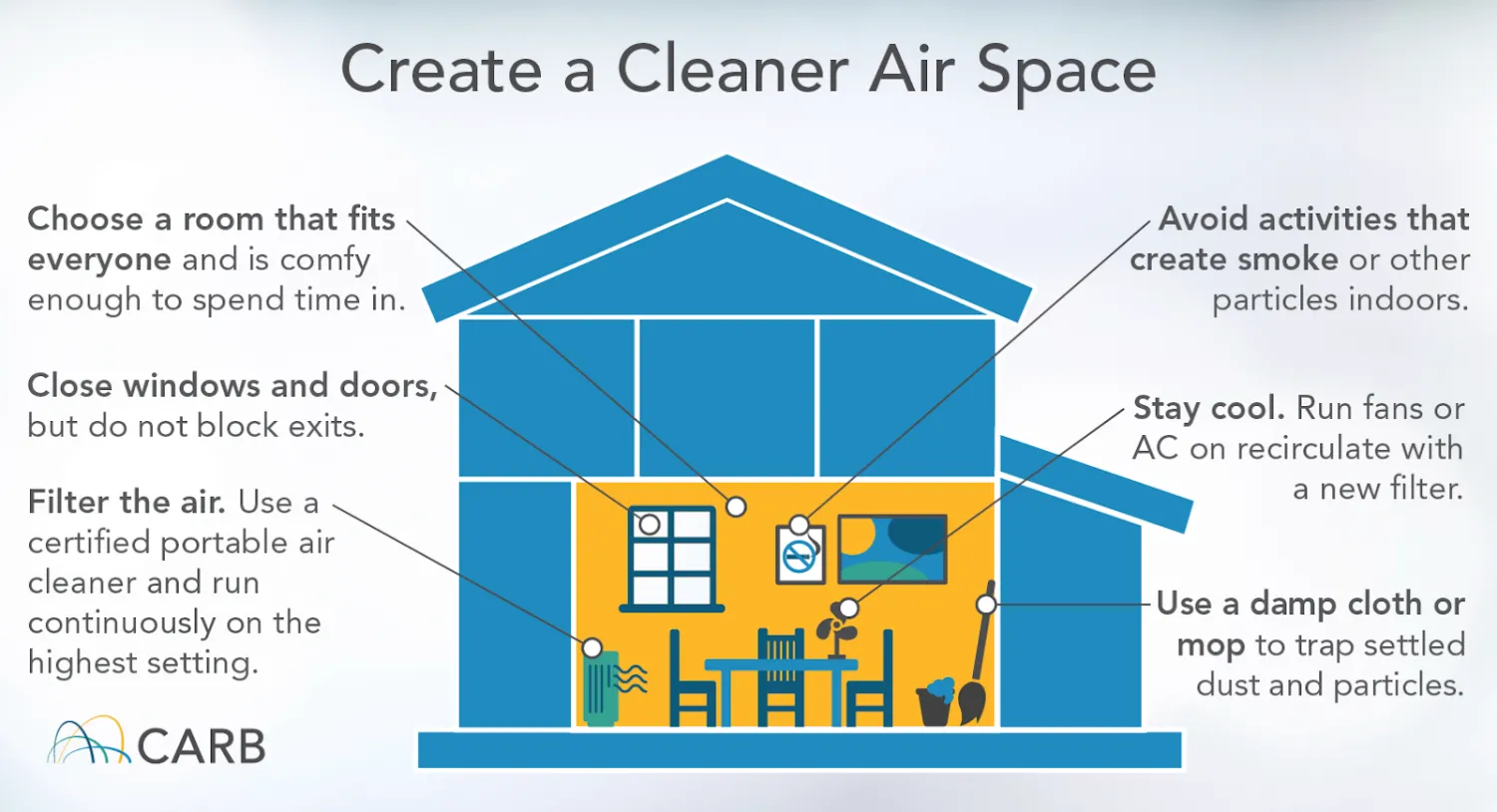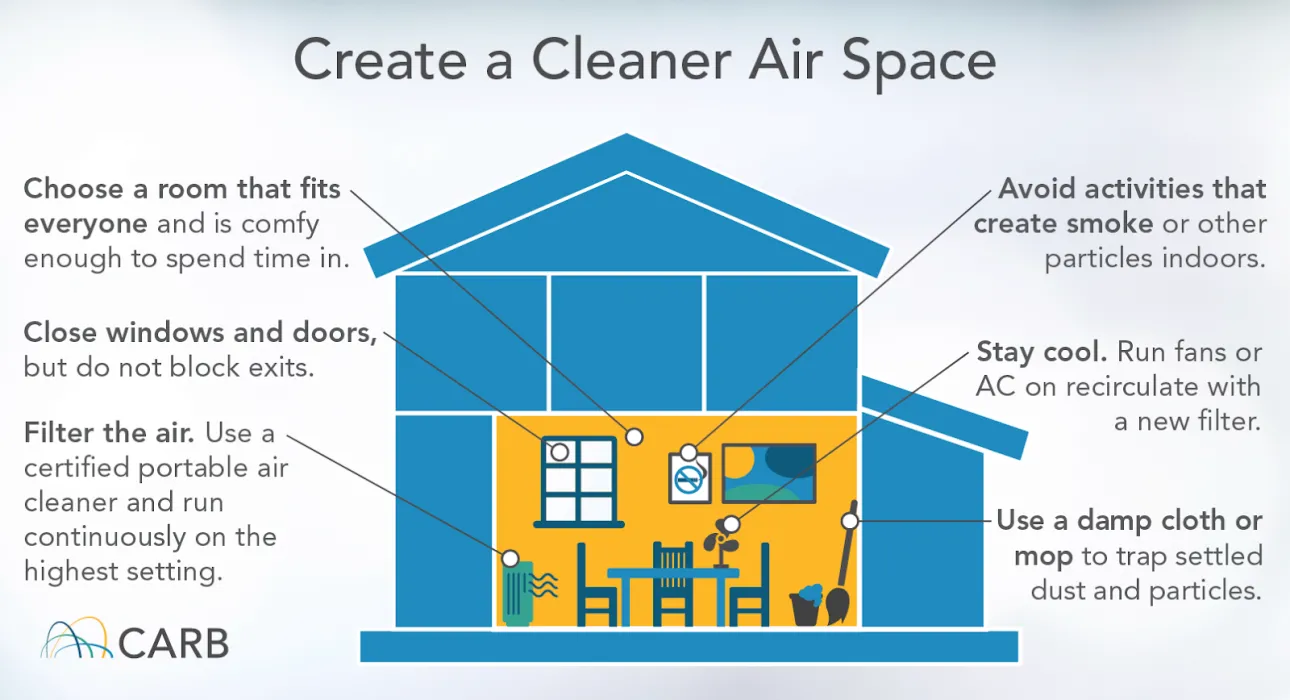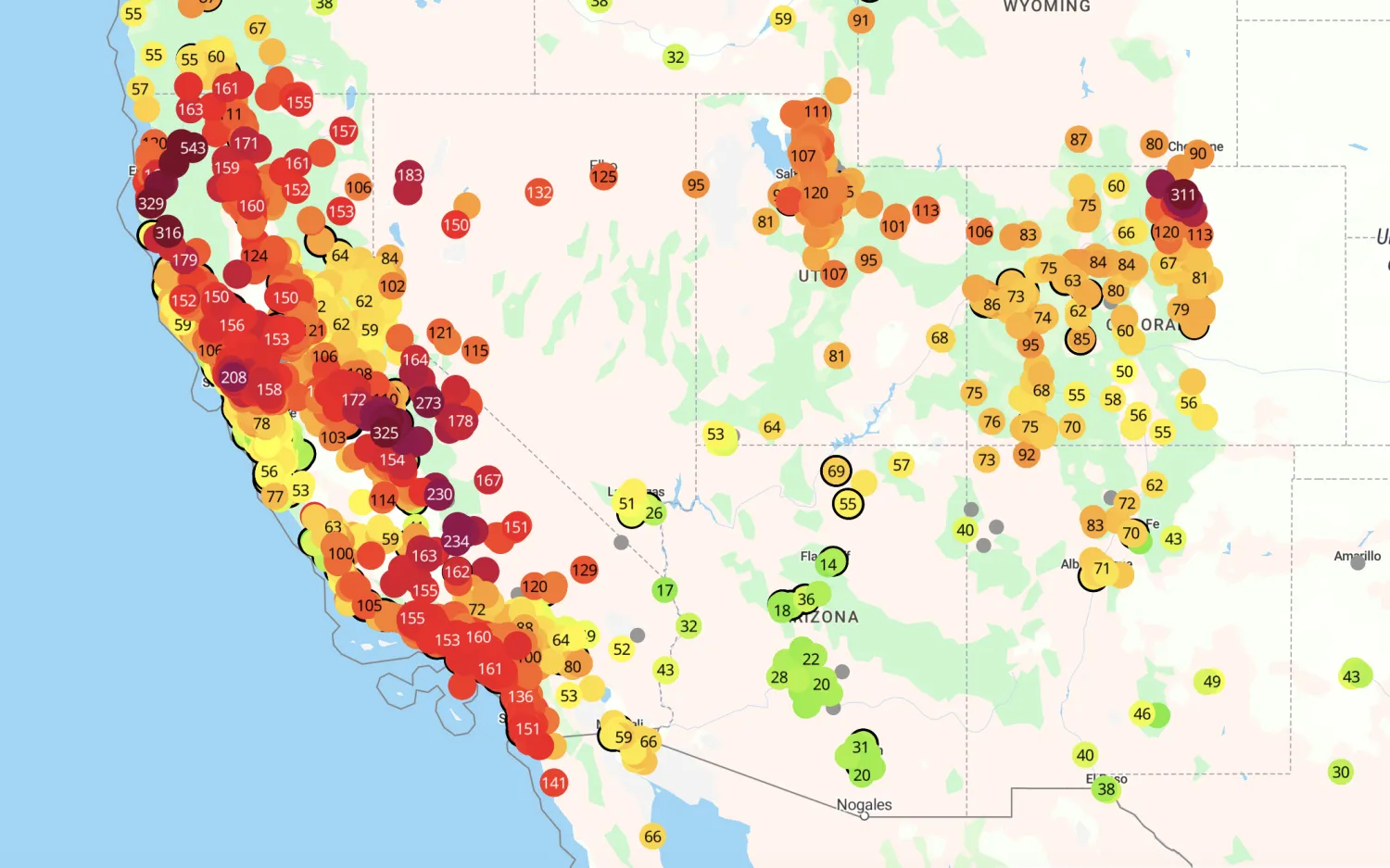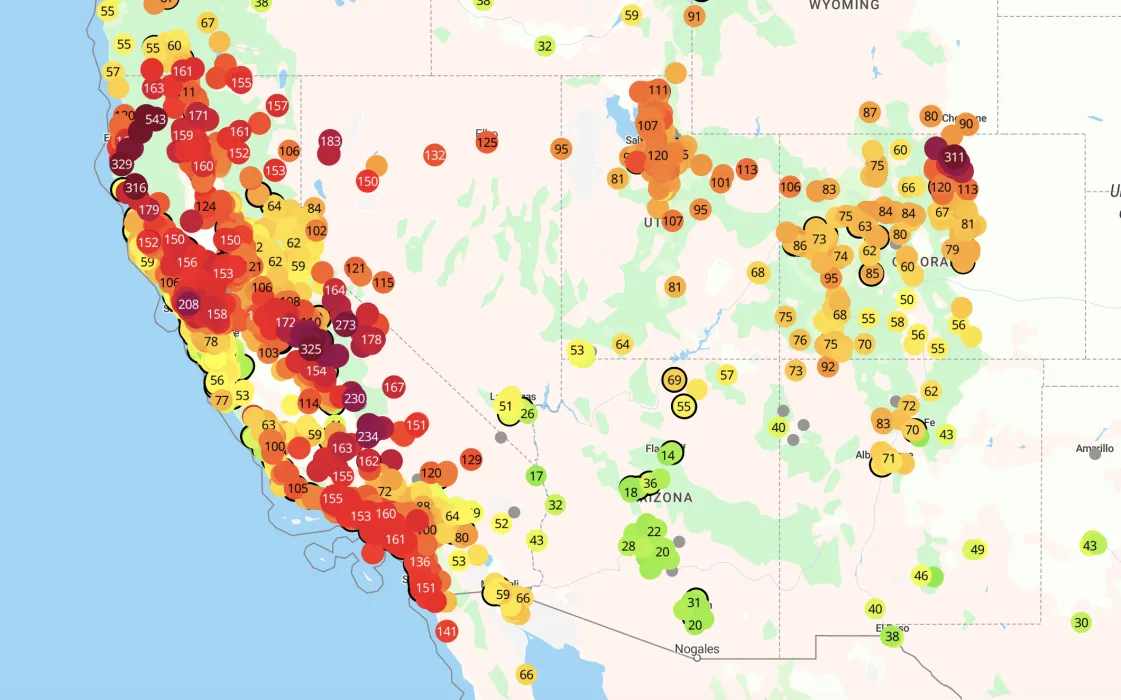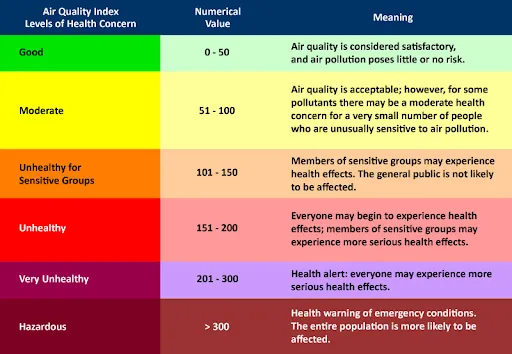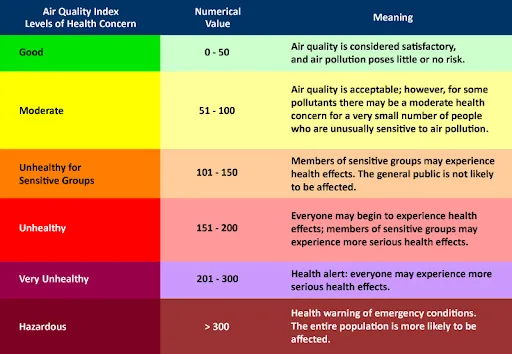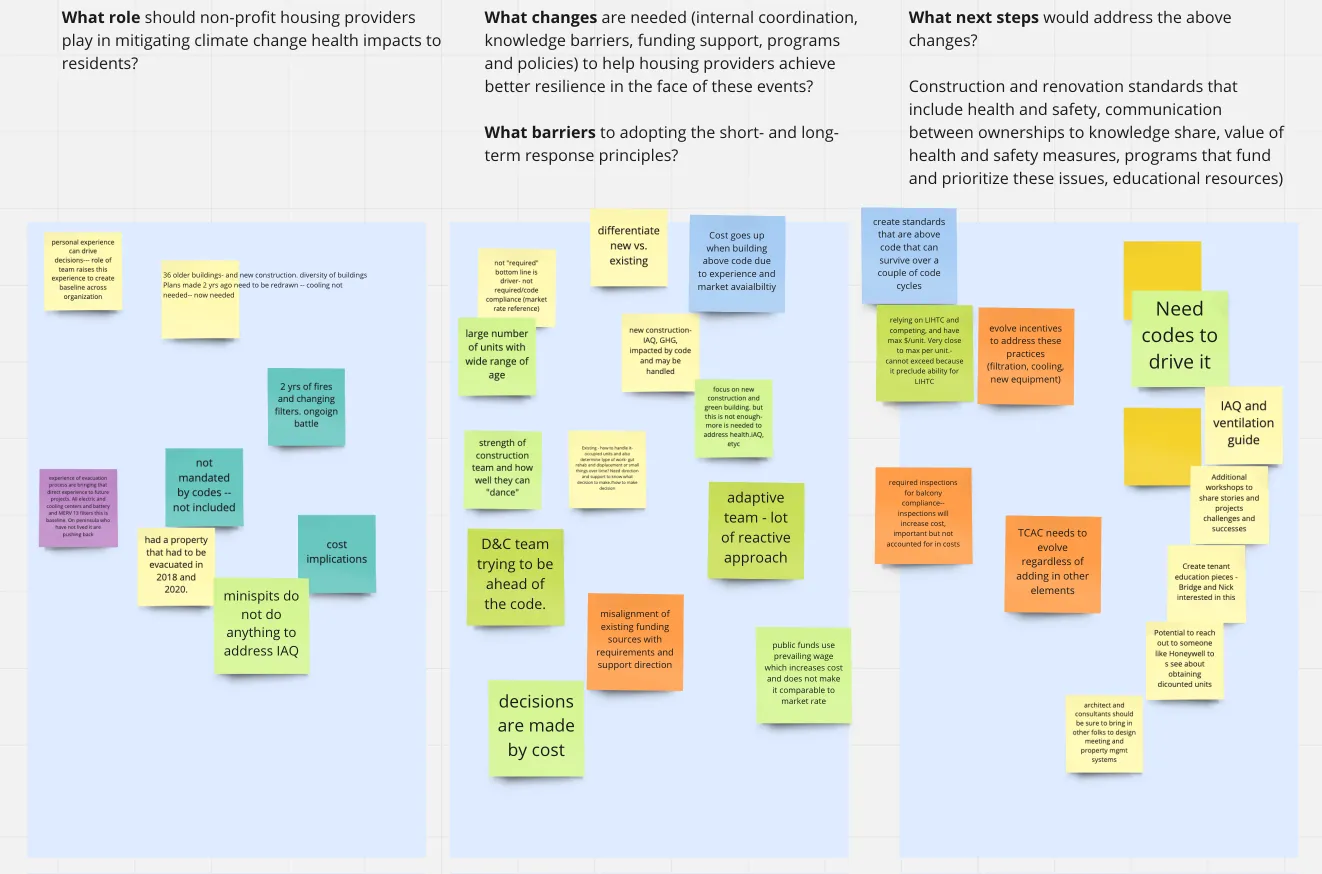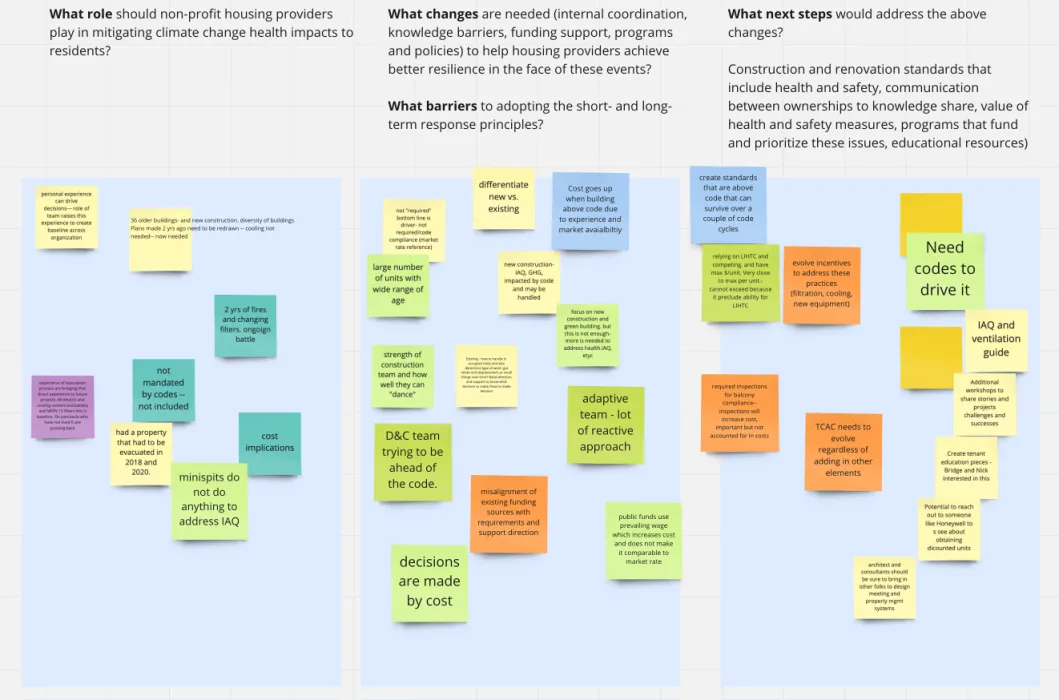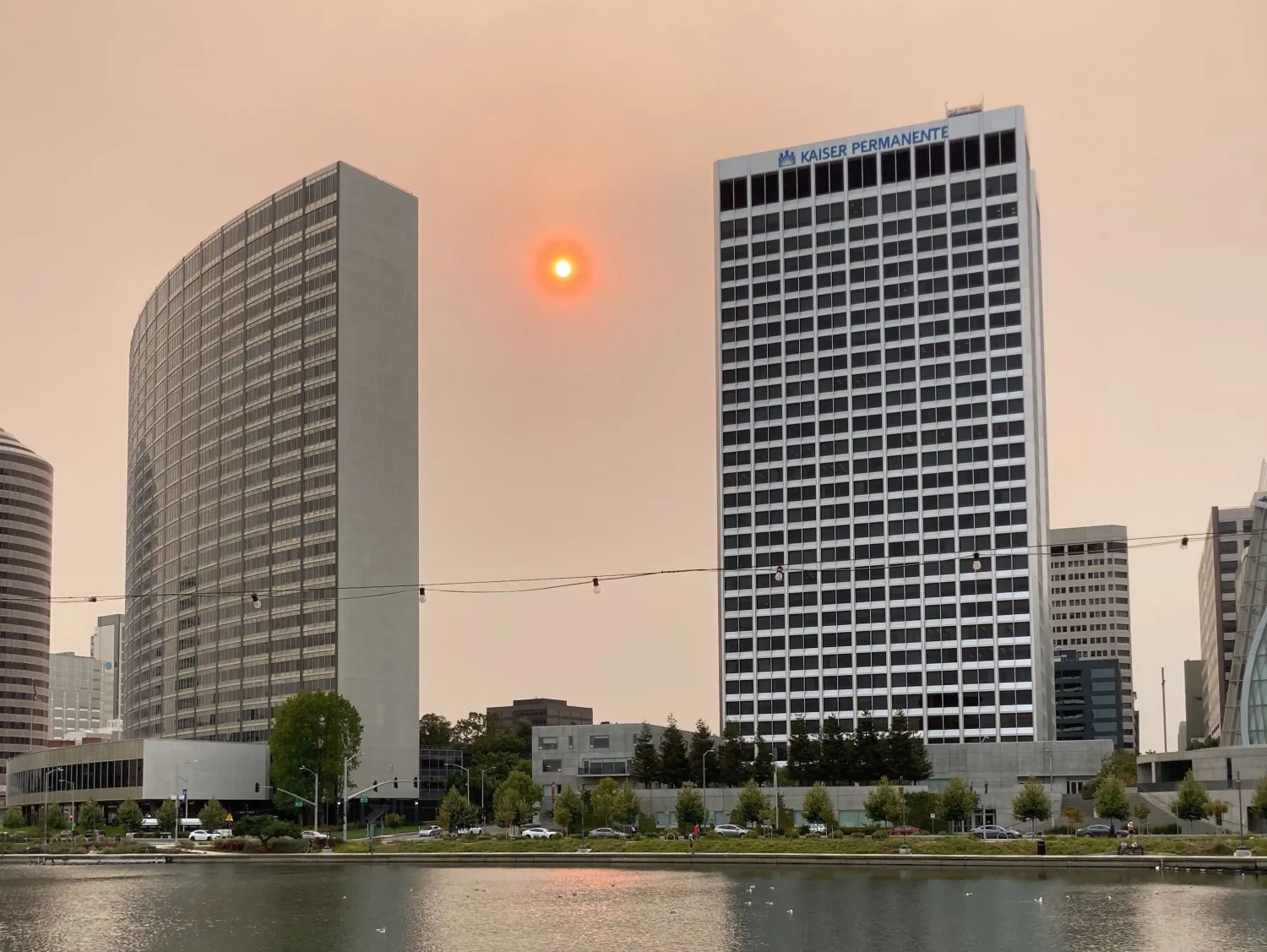
High smoke day in Oakland, California in 2020.
California is no stranger to wildfires. They spring up every year, ravaging dried land and filling the
sky with smoke. As the effects of climate change progress, Californians must prepare for continued
and increasing annual incidence of wildfire, smoke, and extreme heat events. These smoke and
heat events create not only immediate danger but long-term effects on the health and wellness of
California residents. As wildfire season comes to a close, we reflect on what we’ve learned and
prepare for coming seasons.
Populations served by affordable and supportive housing, including low-income families, seniors,
and residents with disabilities are especially vulnerable to these risks. In 2018, The
Commonwealth Fund reported that low-income populations are 15 percent more likely to have
health concerns than those in a higher income bracket—in part due to inadequate living conditions
or access to services.
To help the people who run the types of affordable multifamily housing buildings that are home to
these high-risk residents, David Baker Architects and the Association for Energy Affordability
hosted a virtual roundtable this Fall 2020 with non-profit housing development and operations partners. In
preparation we compiled a set of strategies and resources for housing providers to help safeguard
the health of residents. The workshop revealed common barriers and identified technical and
policy improvements that are necessary for disaster preparedness within low-income housing
projects. Recognizing these barriers and needs helped us formulate long-term goals to improve
resilience for both residents and housing providers.
Short-Term Strategies
There are three principles for taking immediate action in the face of a smoke event:
- Keep unfiltered outdoor air from entering the home
- Filter and recirculate indoor air
- Minimize indoor air pollutants
Keeping unfiltered air out often includes turning off ventilation systems, in addition to shutting windows. It also means shutting PTAC dampers and trickle vents, and using exhaust fans sparingly, except for range hoods while cooking. If homes are not properly sealed, the negative pressure created by exhaust fans can draw unhealthy air into the residence.
Most air supply systems used in apartment buildings, including central fans, side-wall fans, or heat recovery ventilators, do not include sufficient filtration. Anything less than a MERV 13 filter is not designed to capture PM 2.5, the kind of fine particles that can lodge in the lungs and cause harm. A single pass through a MERV 13 filter has about a 70% fine particulate capture effectiveness, which will still struggle to keep up with the most hazardous levels of particulates (read more from Lawrence Berkeley Lab’s Building Technologies team).
Keeping windows shut can be dangerous when smoke events occur during heat waves, as they did this year. A response plan should include offering or directing residents to safe cooling centers. Short of that, residents can be reminded to simply turn off any equipment that generates heat such as lamps, TVs, and computers.
Ceiling fans and pedestal fans increase air speed and can provide comfort until temperatures exceed roughly 80-82 degrees Fahrenheit. Monitoring outdoor air and temperature can be important tools for figuring out when it may be safer and most efficient to let cooler outdoor air in, if still smoky, before returning to a shelter-in-place mode.
Next, filter and recirculate indoor air within the home. Check, clean and replace filters, and run ducted HVAC systems with central fans in “AC” or “fan only” mode to continuously filter recirculated air inside the home. Housing providers can also improve resident access to stand-alone HEPA air purifiers, so that residents who don’t have recirculating HVAC systems will still have a method to remove pollutants from indoor air.
Finally, it is easy to forget that we can minimize indoor sources of pollution. Activities to cut back include vacuuming, aerosols, incense and candles. Avoid cooking methods that produce smoke, like sauteing, frying, broiling, roasting, and toasting. Instead, use electric dedicated cooking appliances like pressure cookers, rice cookers, kettles and microwaves.
For more information on short-term strategies and immediate response, check out Lawrence Berkeley Lab’s smoke and heat resources.
Long-Term Goals
Immediate actions help residents and housing providers react quickly to emergent smoke and heat events. However, traditional and even current construction practices are fundamentally limited in supporting climate resilience.
Air conditioning is still relatively uncommon, even in new construction in many Bay Area and coastal locations. Avoiding air conditioning via passive design is critical and commendable in the face of rising temperatures. However, implementing successful passive design is difficult in mid-rise, loaded-corridor housing. Often an equity gap emerges as AC is disproportionately denied in below-market-rate developments. Ventilation systems with decent filtration or recirculation are even less common across the state for buildings of all vintages.
A major advancement in the 2019 state code effectively required new homes to be served with a constant supply of outside air, usually taking a single pass through a MERV 13 filter. While this is considered a decent level of filtration, it is not sufficient to maintain healthy air during severe smoke events. The solution is to mandate that all ventilation systems have easy-access shut-off controls signage. This idea will be tested by 2019 projects moving through the pipeline, but a few of our engineers have raised concerns, and some have proposed a separate exhaust fan that is not subject to override. There is an urgent need to actively prioritize strategies for extreme events, and highlight the importance of this conversation both for building designers and facility managers.
As wildfires, heat waves, and power outages become more frequent, long-term, proactive strategies are required to safeguard the health of residents and the operational resilience of properties. Our roundtable event with housing providers and authorities helped identify current standards and practices that present challenges for resilient housing. With those barriers in mind, representatives from David Baker Architects and the Association for Energy Affordability workshopped goals that will help housing providers create homes that are prepared for future events.
As with all housing initiatives, real change stems from requirements tied to funding. In California, there is a historic focus on energy efficiency, green building, and renewable energy production in many state-managed housing funding sources. However, funding incentives can be barriers themselves, especially when they turn into an either/or scenario for housing or construction initiatives.
Housing providers have found that standards for energy efficiency commonly supersede those for preparedness. Updating funding incentives and code requirements to recognize the value of preparedness measures will help providers build housing that is more future-proofed and better safeguards public investment. Because housing is critical infrastructure, design measures for climate change mitigation and adaptation are interconnected. To be successful at mitigating climate change, housing must proactively help our communities adapt by stemming health disparities in low-income communities and preventing the need for expensive retrofit measures.
Funding incentives and construction requirements will only go so far without an informed team to carry them out. The last goal for creating healthy homes is building knowledgeable teams among owners, designers, and contractors to advocate for resilience opportunities within housing projects. With an informed, well-rounded team, housing can be built that not only ensures the health of current residents but safeguards future residents from smoke, heat and power failure events.
In advance of next year’s fire season, DBA and AEA will work with our industry partners to develop a concise reference document to guide managers of existing multi-family properties through short-term responses to smoke and heat emergencies. We also plan to convene a follow-up workshop to extend the conversation about long-term preparedness to a wider network of housing industry partners. Our goal is to develop an advocacy platform to advance technologies, practices, and policies to support housing preparedness for climate-change related smoke and heat events.
A Deep Dive into Filters
Checking filters. The MERV rating is listed on the side of the air filter. A pleated 1” or thicker filter with minimum MERV 13 filtration will provide some relief from fine smoke particles. If less than MERV 13, the ventilation system is actively blowing polluted air into the building. If the equipment won’t take a better filter, it is better to shut it off.
To maintain truly healthy indoor air with a single-pass ventilation system, MERV 16 or greater is needed. Most central rooftop ventilation units designed with MERV 13 filters will be able to temporarily run with MERV 16 filters. If residential ventilation is delivered by unit, make ventilation response a part of the emergency plan.
Improve resident access to stand-alone purifiers. The right device contains a HEPA filter and has no ionization (this creates ozone which is tied to other health concerns.) Carbon filters are a bonus but are not necessary. Options for HEPA filters include a DIY Box fan + 20x20x1” MERV 13 filter ($40, ~50-100W); a purifier for 1 room ($50-100, 20W); or a purifier for 2-3 rooms or a small apartment ($150-200, 40W).
Katie Ackerly, AIA, LEED AP, CPHC, is a Principal and Sustainability Lead at DBA. You can contact Katie here.
Chelsea Johnson, AIA, LEED AP, is an Associate at DBA. You can contact Chelsea here.
Anne Riggs, AIA, CASp, is an Associate at DBA. You can contact Anne here.
